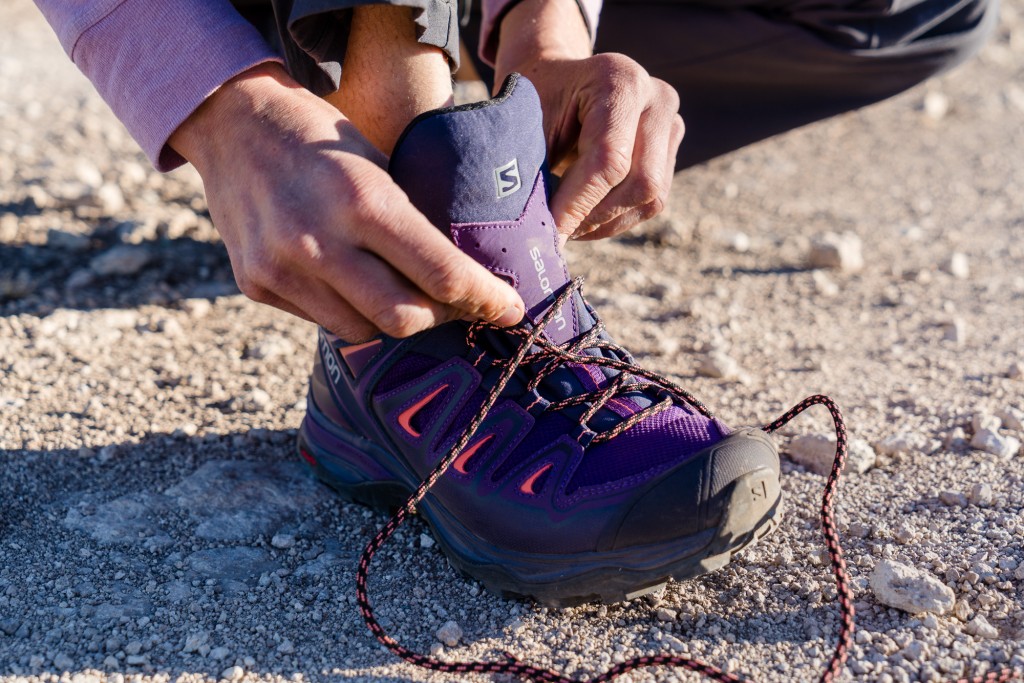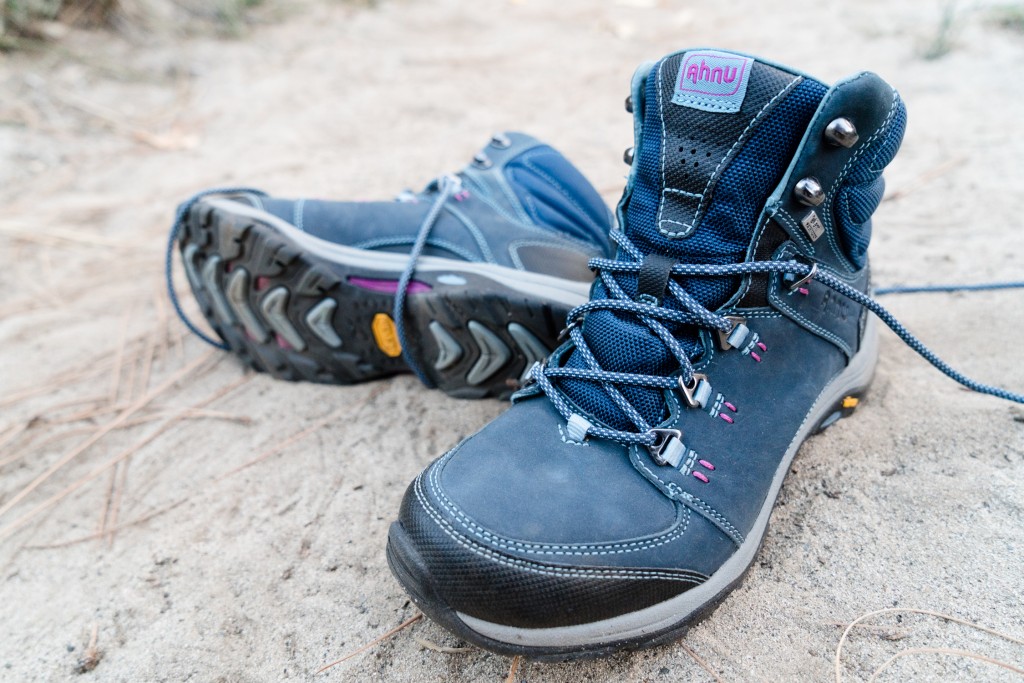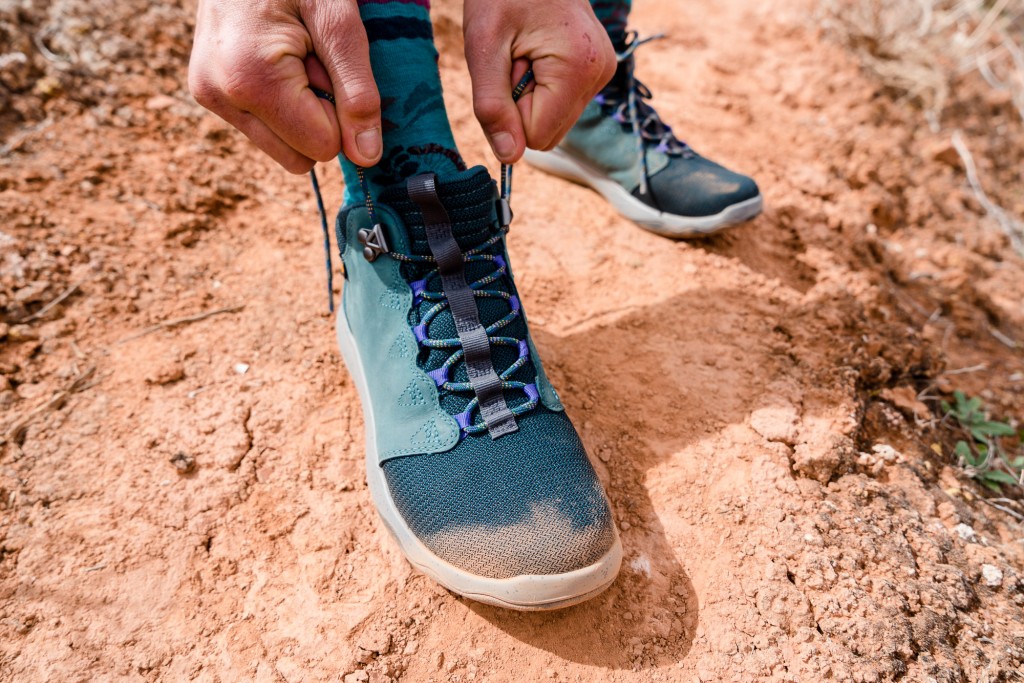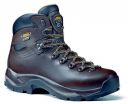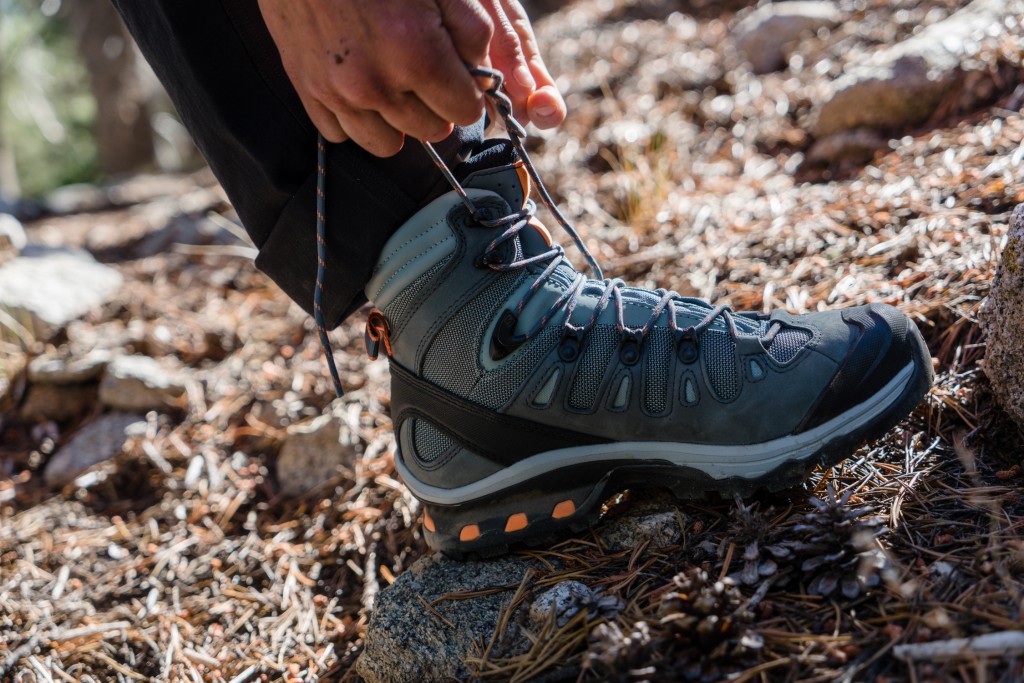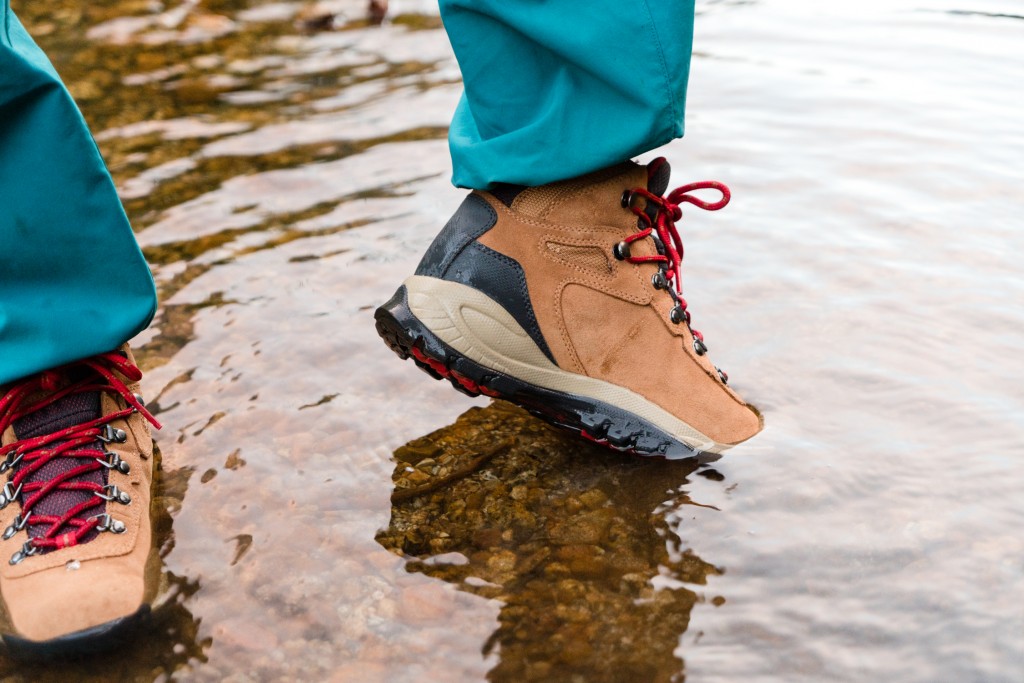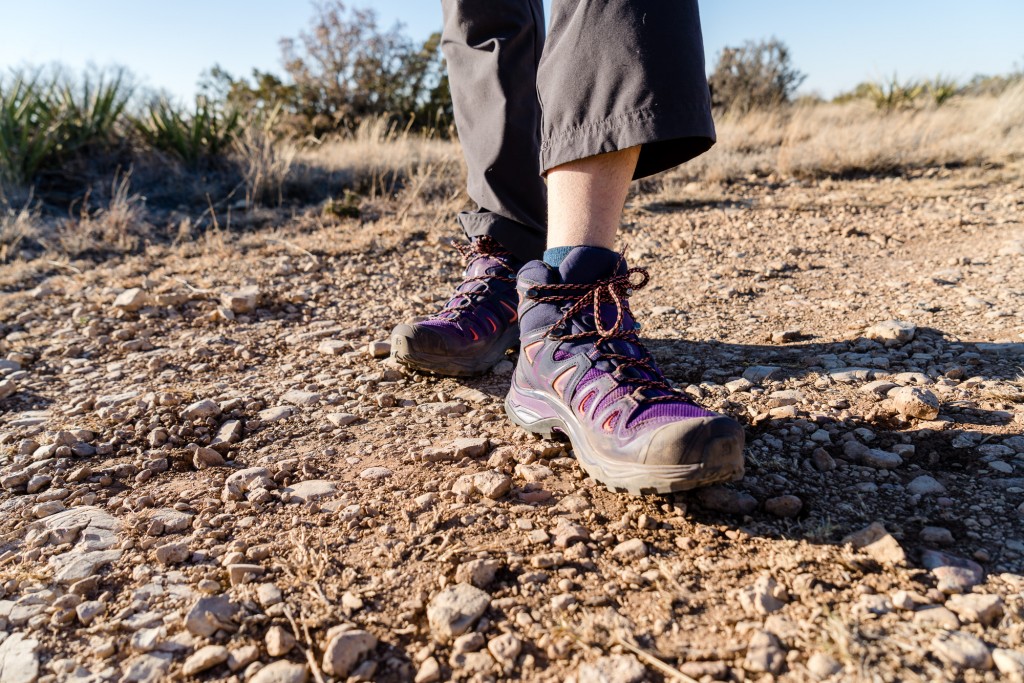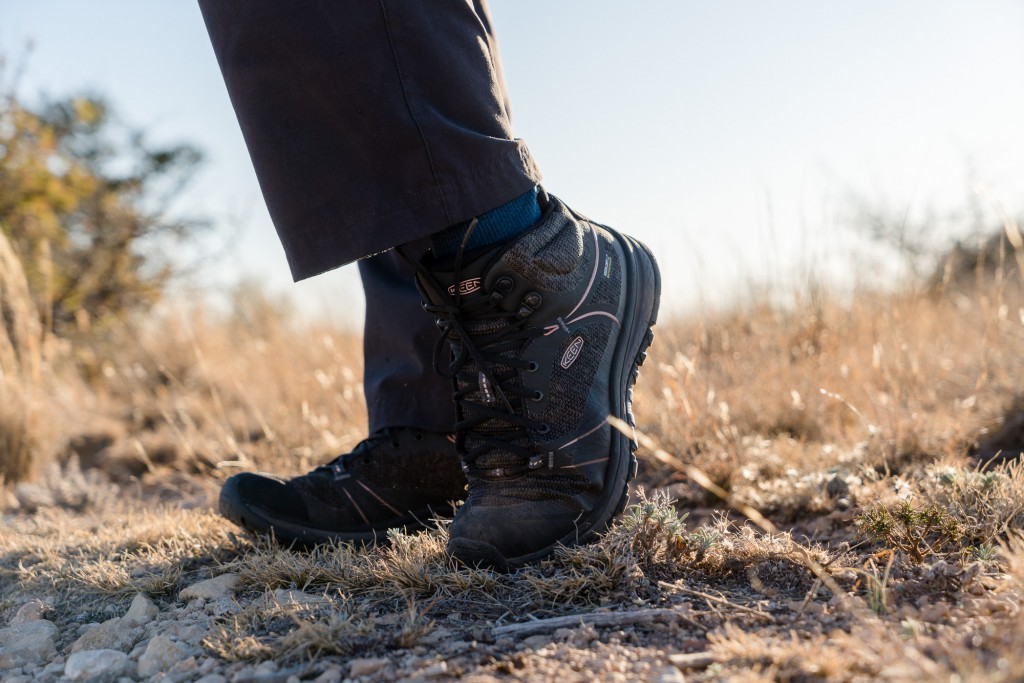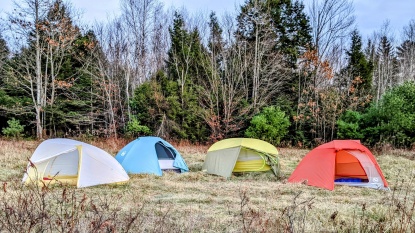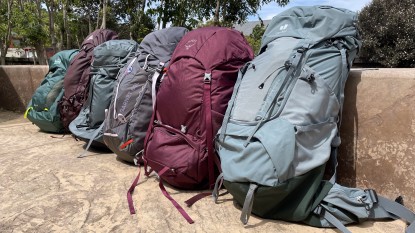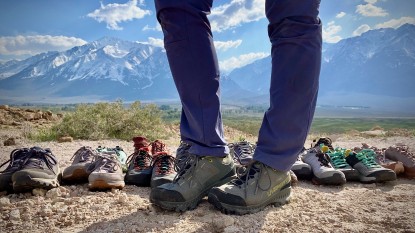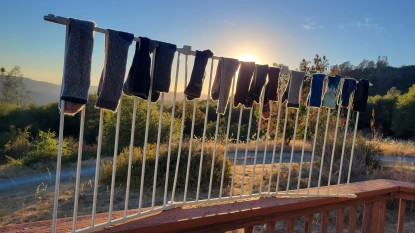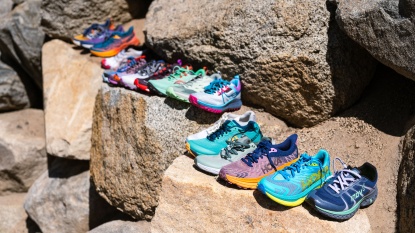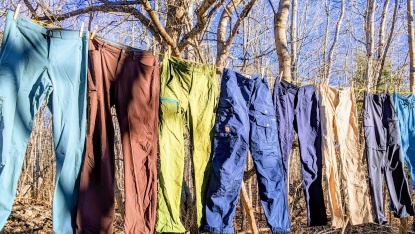We understand the overwhelming task of shopping for a new pair of shoes online — especially a pair that you are going to wear deep into the backcountry, perhaps for days and days in a row. Comfort (including the fit!) and support go hand in hand and are the two most important factors to consider when buying a new pair of boots. If a boot doesn't fit the anatomy of your feet or provide proper support, it will be incredibly uncomfortable. Traction and stability are also integral to the overall function of a boot since we often find ourselves on uneven terrain. This article deciphers marketing lingo and guides you through a boot purchase decision of the best women's hiking boots.
Anatomy of a Hiking Boot and Materials
To get started, a little information on the various components that make up a hiking boot can help direct you into the type of boot you're looking for. The uppers, lining, and midsoles of a boot all dictate whether the boot will be breathable, waterproof, supportive, and durable. Knowing the ins and outs of the make-up of these boots will also help you wade through loads of information provided by manufacturers online. Below is a breakdown of the anatomical parts of a boot from top to bottom, and the recommended materials to look for:
Upper
The upper of a boot is essentially all of the material above the rubber sole. It refers to the main materials used to keep your feet protected from the elements. This part of the boot should offer breathability and is also the most important when considering water-resistant qualities. Abrasion will test this material's strength and durability, so opt for abrasion-resistant materials, such as abrasion-resistant mesh, leather and synthetic leather, and suede. Solid leather uppers tend to be the most durable and long-lasting but will be the least breathable and take the longest to break in.
Different kinds of leather have varying properties. Nubuck leather (very common in hiking boot uppers) is not as stiff as full-grain leather, nor does it require as long a break-in period. It is durable against abrasion and water. Full-grain leather is a heavier material but endures long-term trail use.
Lining
The interior of a hiking boot is lined so that the hiker is not relying on the upper and sole to provide comfort and support. The lining and insole marry together to provide you with support underfoot, comfort all around, and then influence the size and shape of the inside of the shoe. Another important role of the lining is to serve as a water barrier and to also manage moisture from sweating. The lining is responsible for insulating your foot as well. Summer hiking doesn't require much insulation but if you intend to hike in the shoulder seasons of spring and fall or end up shopping for a heavier duty boot, consider the insulating properties of the lining.
Common lining materials are synthetic fabrics, polyester mesh, abrasion-resistant fabrics, and waterproof/breathable linings. The waterproof lining is comparable to wrapping your foot in a plastic sock, or waterproof bootie, before putting it in your boot, except this technology is already designed into the lining to keep your feet dry from outside water contact. Popular brands such as Gore-Tex and eVent provide a waterproof lining that also allows your foot to breathe. Note that any “breathable” waterproof lining is bound to be less breathable than a boot without such a lining.
Insole, Midsole, and Outsole
The insole is what your foot rests on. It is the material directly underfoot. Insoles are often removable and customizable. Molded EVA is the common factory insole that comes in the shoe upon purchase. Customizable insoles for increased ergonomic support and comfort are made of foam. Carbon fiber, memory foam, and gel are the common materials used to construct insoles that can be formed and fitted to your boots, which are also sold separately from third-party manufacturers.
The midsole sits between the insole and the sole of the shoe and provides much of the support. Dual-density EVA molded midsoles are the most common in hiking boots. EVA stands for ethylene vinyl acetate. It is a plastic foam-like material that can be more or less dense before constructed into a shoe. The denser the EVA midsole is, the longer the break-in period will be. Typically, hiking shoes utilize an EVA material that is soft and flexible to ensure immediate comfort. In contrast, a hiking boot will utilize a dense EVA or polyurethane alternative to ensure more support under the weight of a heavier pack load.
Support is gained by shanks and plates incorporated between the midsoles and the outsoles. Shanks and plates are layers of nylon or thermoplastic urethane that stiffen the boot underfoot. This adds support and significantly minimizes bruising of the feet from rugged terrain such as rocks, roots, and branches on the trail. Shanks can either run the full length of the boot or only run 3/4 length. Boots with full shanks should not bend or flex under the forefoot or beneath the middle of the foot. The heel should feel stabilized.
The sole, or outsole, of a hiker is the bottom part of the shoe that makes contact with the trail. It is often constructed of a hard rubber capable of maintaining traction and stability on a variety of terrain conditions from mud to rock to snow. Proprietary rubber blends are designed to provide the highest degree of stability, shock absorption, and traction. Softer rubber will offer better grip on smooth surfaces but will also wear out at a faster rate. Harder rubber will offer less sticky traction on smooth surfaces but will endure long-term wear better. Tread patterns with varying sizes and shapes of lugs, or cleat-like features, tend to offer better traction than uniform patterned tread. Lugs should release ground material without accumulating underfoot. Widely spaced, aggressive lugs with depth are ideal for hiking boots.
The insole, midsole, and outsole are critical factors for comfort and support. While the midsole and outsole are not customizable, the insole can be customized to offer added support and comfort.
Toe Protection
The best toe protection is offered by a rubber toe cap. A rubber toe cap is the coverage of rubber or similar material that covers the toe area of the hiking boot. Toe protection is necessary on most hiking trails as you will likely encounter hard surfaces to bump and kick your toes into. Some boots have rands, which are strips of rubber that may cover only the toe area or extend around the shoe's circumference for added durability and protection from abrasion and water. It is often reinforced with an inner form to create a stiff toe area. This reduces the risk of pain and discomfort from unintentional toe contact with external things such as rocks and also strengthens the shoe from potential damage.
Types of Hiking Footwear
At OutdoorGearLab, we are all about the lightweight options when it comes to gear. Many hikers assume this means choosing trail runners or lightweight hiking shoes, but many hiking boots weigh mere ounces more than hiking shoes, yet offer a significant increase in support and stability. For some women, hiking shoes may result in the most efficient use of energy, but others will find that boots, now in lighter weight models, provide added support that lends to greater comfort and enjoyment on the trail. All of the boots in our review are within a pound in weight of the top women's hiking shoes we reviewed, making them a great option for day hikes and long backpacking trips. Your needs as a hiker will vary based on how much ankle and foot support you need, trail conditions, and pack weight. We have broken down the categories of boots by weight and later by hiking style. This is meant to help you narrow in on the specifics you are looking for in your next boot purchase.
Lightweight
Midweight
Heavyweight
Types of Hiking Styles
So, now that you know about the overall makeup of a hiking boot as well as the weight breakdowns that separate boots into various categories, let's get into the style of hiking the boots are intended for. A boot that is designed for day hikes, for example, is going to be significantly different looking than a boot designed with backpacking in mind.
Day Hiking
On day hikes, provisions such as water and snacks are carried in a daypack, as well as minimal gear such as a backpacking water filter, an extra layer, a camera, and a minimal first aid kit. Check out our best first aid kit review if you need help choosing the right one for your next adventure. The pack load is considered lightweight based on the few items in comparison to an overnight trip. Day hiking will take you to incredible places that are relatively close to a trailhead. Lightweight boots and shoes are suited for day hiking.
Backpacking
Boots excel while backpacking for multiple days. Spending days, weeks, or even months on the trail is completely different from any single day on the trail. It demands comfort in your footwear as you will spend miles in a single pair of boots. Whether progressing a couple of miles each day or aiming to hike 20+ miles per day, your footwear should meet the demands of the most challenging terrain you anticipate hiking across. Boots have rigid soles intended for rough surfaces but don't forget to consider cushion and padding in the fit of the shoe. Backpack weight loads of 20-40 pounds are suitable with any of the boots in our review. Mid-weight boots are preferred over lightweight boots when carrying mid- to heavyweight pack loads.
Rugged Terrain
Rugged terrain includes rocky trails, exposed tree roots, loose scree, talus, and potential snow crossings where kicking footsteps are required. Loose and rough terrain presents plenty of opportunity for rolled ankles and loss of traction. Trails that meander through rugged terrain demand boots that maintain traction provide adequate stability (particularly under a pack load), and a high ankle shaft for keeping feet dry and debris free. All of the mid-weight boots in our women's review are suited for hiking in rugged terrain. Lightweight boots are suitable for some rugged terrain, but most are soft and closely resemble hiking shoes, limiting their support and stability in rugged environments.
Environmental Considerations
Hiking boots should be selected based on the most difficult terrain you expect to encounter. Trail conditions vary greatly from region to region. You may plan to hike locally in a landscape that is familiar, or you may have a goal of trekking internationally through foreign landscapes. No matter where you plan to hike, the comfort of your boots is fundamental. It is likely that the purchase of hiking shoes will require replacement within a couple of seasons, but boots can last for a couple of years of hiking. For this reason, it is important to consider the diverse terrain you intend to hike through so you can get the most out of your boots.
Trail Conditions: Trail conditions are as diverse as the landscapes we venture to. The varying terrain demands different levels of tread aggression, from semi-aggressive to aggressive. A semi-aggressive tread will have shallow lugs on the bottom of the boot and will have less diversity in the tread pattern. A semi-aggressive tread is suitable for on-trail hiking in terrain that is well-traveled. An aggressive tread will have deep lug depths and have a varying tread pattern for managing the terrain. Aggressive tread becomes necessary in loose, steep terrain, off-trail travel, or where mud, rain, or snow are anticipated. All of the women's boots in our review are suitable for varying terrain, from deep mud to loose talus to steep slopes.
Water: Water, either falling from the sky or obstructing the trail, has the potential to alter your hiking plans. All of the women's boots in our review are designed with waterproof/breathable membrane linings that keep your feet dry, taking the guesswork out of selecting the right boot. In high elevation environments, snow and raging creeks are common, even in late summer. Creek crossings and snow crossings are appropriate applications for a waterproof model. The higher the ankle shaft, the less likely your socks will get wet.
Seasons: A boot capable of providing comfort throughout all four seasons is ideal. Women planning to hike in hot summer months should consider the breathability of their footwear. All leather may not be most suitable as it will provide the least amount of breathability in hot temperatures. If winter is your favorite time to hike, consider more aggressive tread patterns and higher ankle shafts for managing potential snow underfoot and keeping snow out of your boot. Just as the consideration for varying terrain conditions in diverse landscapes, the four seasons present different aspects to consider for hiking comfort and enjoyment. Any of the boots in our review can be used for year-round hiking. However, strap-on crampons may be necessary for some winter conditions, and not all of the boots offer adequate breathability designs for hot summer hiking. Our best winter boots review outlines our top choices for dedicated winter footwear.
Other Considerations
Water Resistance
Water resistance is determined by a boot's ability to keep your feet dry when in contact with water. It allows you the ability to cross a creek, but if you stand in the water for an extended period (in our tests, this is more than a couple of minutes), the exterior of the boots begin to absorb water and water leaks through the eyelets. For the intended uses of hikers, this is plenty adequate so long as you don't stand in water for prolonged periods.
Water resistance of boots may be attained by either a waterproof/breathable membrane or with an exterior chemical treatment. All of the models we reviewed have either a Gore-Tex or similar lining such as eVent that offers waterproof qualities and breathability. An exterior chemical treatment creates a chemical wall that is impenetrable by water. Products like these are available at outdoor retailers. We don't recommend purchasing a non-water resistant boot model only to apply an outer treatment, although, after long-term use, this chemical application is effective in restoring the original water resistance.
Breathability
Breathability ensures that your feet stay well ventilated, reducing or eliminating the build-up of moisture in your socks and footbed. Airflow is achieved by mesh panels and lightweight, breathable materials being used in the design of footwear. Boots are not typically known for being breathable because they have historically been designed of all leather for durability and support, and some models are still constructed of full leather outers. The use of mesh and lighter-weight materials allows more breathability in boots.
A bonus feature associated with breathability (or sometimes the lack thereof) is technically designed footbeds that offer anti-odor, anti-microbial, and climate control. We think these are notable features associated with breathability and comfort in hot and cold temperatures.
Fit
The fit is the most important factor to consider before selecting your boots. We have provided you with a thorough comparative review of the best women's boots and noted where individual styles vary in widths, but getting a proper fit is best when trying a boot on in person. After all, your new boots should last you through hundreds of miles of trails, and ensuring the best fit will lend to long-term comfort and support. Below are important considerations to guide you through the fitting and sizing process.
Fitting in person:
Properly fitting a boot starts with having top quality hiking socks. This accurately sizes the foot to how it will fit while on the trail. Another tip to achieve the accuracy of sizing is to try boots on in the afternoon as opposed to the morning. Many avid hikers will attest to sizing hiking footwear up a ½ or whole size above your street shoe size. By trying boots on in the afternoon, your feet have had an opportunity to warm up and expand from their early morning, rested size.
Next, be sure that your feet have wiggle room in the toe box but do not shift around inside the boot from side-to-side or front to back. An accurate length and width in sizing will reduce the likelihood of toe jam, blisters, and other sizing related discomforts. Each manufacturer uses a foot mold, or last, to shape the inside of the boots. Some foot molds may not fit your feet as well as others. Experiment with different brands and different models. Many boots, such as the Lowa Renegade, are available in narrow, regular, and wide widths.
Ideally, your new boots will provide support under the arches of your feet and offer stability underfoot. Comfort may be customized by replacing the included insoles with aftermarket insoles like Superfeet; insoles and orthotics provide the ability to alter the arch support and overall foot comfort by creating more or less support. Check out our best insoles review to see our favorites.
Hiking boots should be firm and should not bend in the sole. A sturdy shank will ensure a firm sole and midsole. The shoe should resist a downward bend but lend enough flexibility for the natural bend in the top of the foot around the toe box. Lastly, your foot should not lift up in the heel while hiking.
Experiment with lacing systems by tightening and loosening the laces. If you are restricted in the toe box but your heel lifts, loosen the laces on the lower portion of the foot, tie a knot, then tighten the laces up high. If you need more security on the top of your foot and more space in the ankle shaft, tighten the laces on your forefoot, tie an optional knot to secure, then lace up loosely along the ankle. There are many ways to lace your boots so that you experience an ideal level of comfort, support, and stability.
Fitting at home:A proper fit will be challenging to achieve from home, especially if you are unfamiliar with specific brands and their fit on your feet. See the individual manufacturers' website for sizing charts and step-by-step instructions for measuring your feet. A great option is to find an online retailer that accepts returns and order more than one pair of boots from different brands to experiment with sizing and fit.
Be sure to find a boot that is comfortable, leaving room for movement and activity, yet not allowing too much room for sliding around. You want to be comfortable and well supported while also feeling stable in varying terrain.
Break-in Period
Boots usually require a break-in period. The stiffness of the outer materials could warrant a break-in period of a few hours on the trail or a handful of longer hikes before maximum comfort and fit is achieved. Don't be discouraged from purchasing a boot that requires brief discomfort during initial hikes because the long-term durability of the boots will outweigh the benefits of a lightweight shoe that requires no break-in period. Fabric and mesh panels designed with leather reduce the break-in period, as these materials are softer and more flexible by nature. A boot constructed of all leather uppers offers more protection and durability in rigorous terrain but will require a break-in period that lasts longer than hybrid construction designs. Beginning with a proper fit upon purchase will ensure long-term comfort.
For breaking in your new hiking boots, start with short hikes. If your hiking objectives involve multi-day trips, wear your hiking boots on a few day hikes before committing to an overnight adventure. This will present a great opportunity to fine-tune your lacing as well. If your feet slide around or feel cramped, consider changing your socks. If you experience sharp pressure points when wearing all-leather boots, consider using a leather softener. Taking the time to break your hiking boots in will lead to greater enjoyment on longer trail days and overnight trips.
Conclusion
Hopefully, this information will help guide you in the right direction toward the comfortable and properly-fitting hiking boots your feet deserve! We have outlined the basics — from the anatomy of a boot to the types of trail conditions you may encounter. All of these factors should be considered when buying a new pair of shoes, but above all, fit and comfort are the important aspects. We suggest trying boots on in person first if you can, and if not, make sure you do your research and make sure you're buying the right boot for the job! Check out our individual reviews for specifics on the current models on the market.


